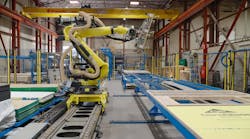eDesign Suite software tools help building designers rapidly compare annual energy costs for HVAC designs. Supporting the design of high-performance buildings that consume less energy, the eDesign Suite assists engineers in the early design phase of a project, when rapid evaluation of design alternatives is critical. The Building System Optimizer, a major offering under the eDesign Suite, uses a streamlined user interface and automatic model generation to allow a full model of the building and its HVAC systems to be configured in just minutes. The Building System Optimizer is the fifth component of Carrier's suite of software tools, which has been renamed Carrier's eDesign Suite, replacing the E20-II software suite name that has been used since 1981. The Building System Optimizer adopts the most current technology to automate key engineering tasks involved in the design of HVAC systems. In addition to the Building System Optimizer, the eDesign Suite includes:
• Hourly Analysis Program (HAP), which calculates peak cooling and heating loads for buildings; sizes HVAC systems and equipment components, calculates and compares annual energy costs for design alternatives, and performs prescribed analysis for Leadership in Energy and Environmental Design Energy and Atmosphere Credit 1.
• System Design Load, which calculates peak cooling and heating loads for buildings and sizes HVAC systems and equipment components.
• Engineering Economic Analysis, which compares life-cycle costs for HVAC design alternatives to determine which design has the best life-cycle cost.
• Refrigerant Piping Design, which calculates required sizes for refrigerant piping connecting components in split DX air conditioning systems and for chillers using remote condensers or evaporators.—Carrier








